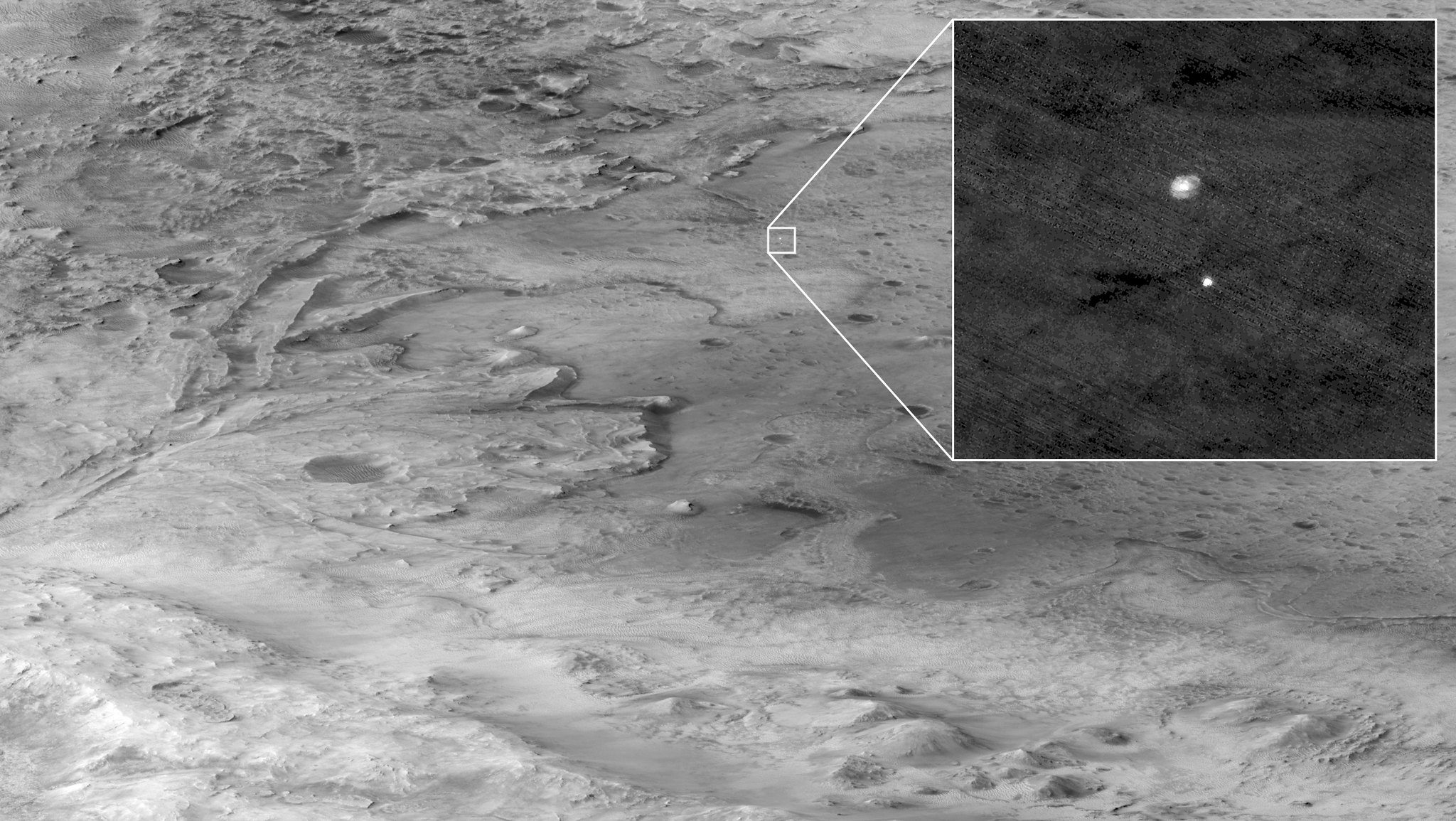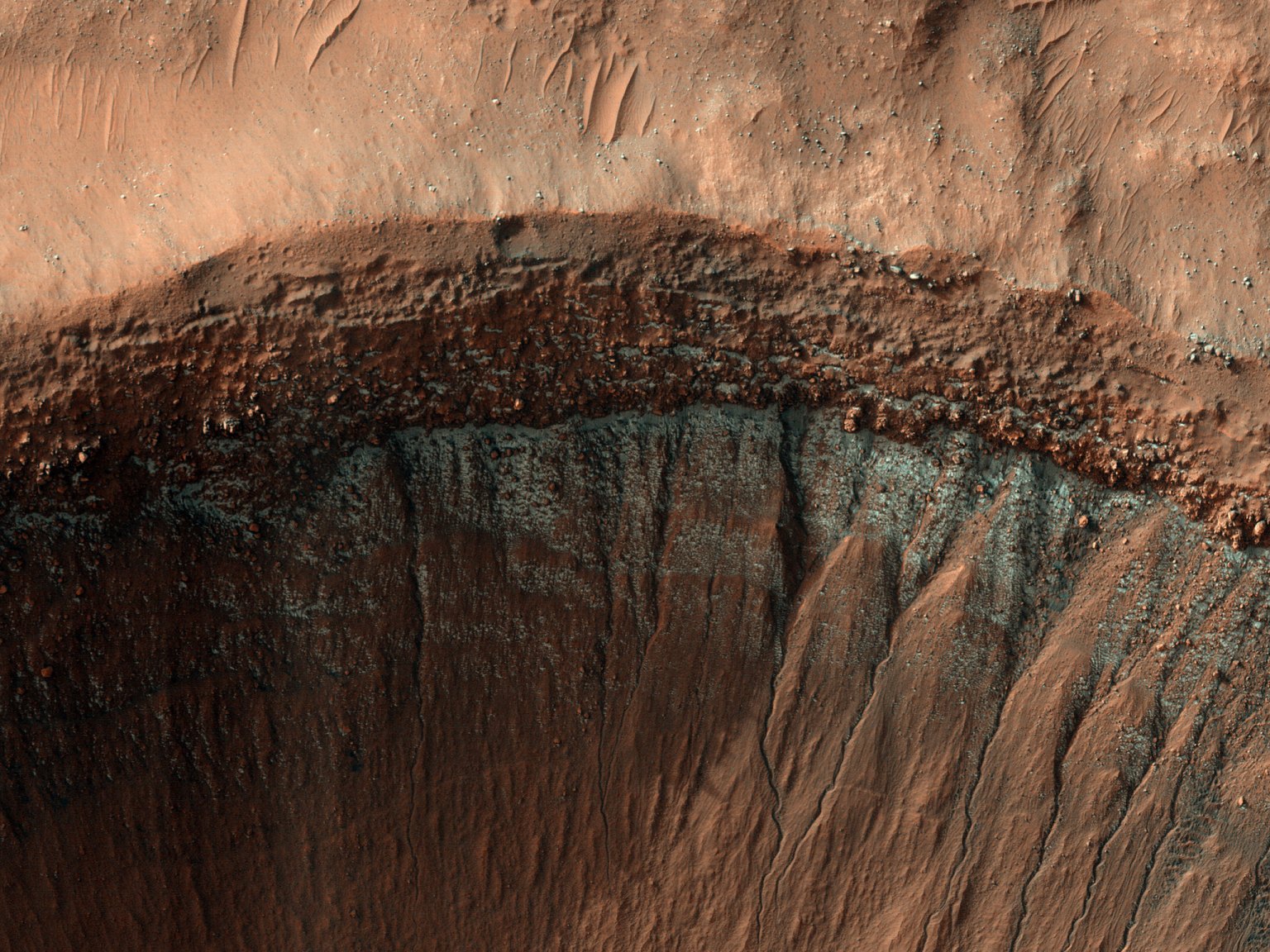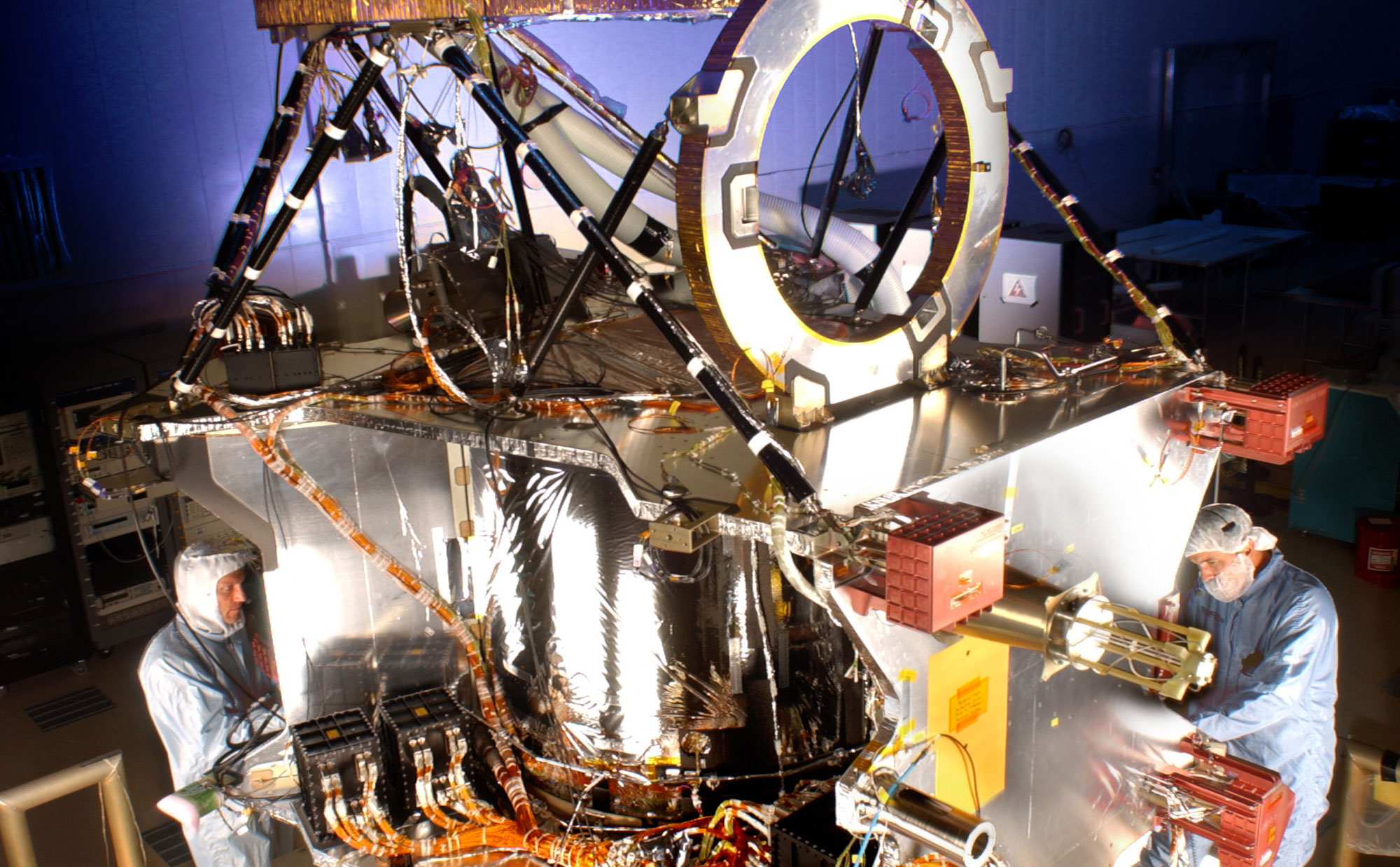Mars Reconnaissance Orbiter
Science
Mars Reconnaissance Orbiter continually provides new information in unprecedented detail about the surface, subsurface, and atmosphere of Mars.
Overview
Among other ongoing achievements, data collected by Mars Reconnaissance Orbiter continues to help Mars scientists and engineers characterize potential landing sites for other missions. Mars Reconnaissance Orbiter is part of a series of expeditions to the red planet that help meet the Mars Exploration Program’s four science goals.

Key Milestones
| Mars Orbit Insertion March 12, 2006 | Capturing the spacecraft into orbit around Mars |
| Aerobraking March 2006 - Nov. 2006 | Orbiter slows down in the martian atmosphere and is placed into a near polar, low altitude, circular orbit for science-data collecting; characterized upper atmospheric density |
| Primary Science Phase Nov. 2006 - Nov. 2008 | Higher resolution observations of the atmosphere, surface and subsurface of Mars; extended coverage to identify targets of interest; landing site and relay support for Phoenix Mars Scout |
| Extended Science Phase Nov. 2008 - Dec. 2010 | High-resolution targeted imaging of surface composition and morphology revealing potentially habitable zones; internal and external polar cap structure; subsurface ice; Mars Science Laboratory landing site support |
| Extended Mission 1 Dec. 2010 - Sep. 2012 | Characterizing seasonal processes and their interannual variability; searching for surface changes; diversity of Mars further revealed; critical event coverage of Mars Science Laboratory landing |
| Extended Mission 2 Oct. 2012 - Oct. 2014 (in progress) | Targeting new locales of interest, following up on earlier discoveries, and characterizing interannual variability in atmospheric and surface processes; relay support for Mars Science Lab and Mars Exploration Rovers |
Objectives
The Mars Reconnaissance Orbiter has the following science objectives:
1. Characterize the present climate of Mars and its physical mechanisms of seasonal and interannual climate change
2. Determine the nature of complex layered terrain on Mars and identify water-related landforms
3. Search for sites showing evidence of aqueous and/or hydrothermal activity
4. Identify and characterize sites with the highest potential for landed science and sample return by future Mars missions
5. Return scientific data from Mars landed craft during a relay phase
Science Highlights
NASA's Mars Reconnaissance Orbiter has gathered and beamed back to Earth unprecedented details about the Red Planet's surface, subsurface, and atmosphere. Using this treasure trove of high-quality data, scientists have confirmed some previously held scientific theories about Mars, and turned others upside down.
Learn More about Science Highlights
Science Instruments
The Mars Reconnaissance Orbiter spacecraft carries six instruments, three engineering instruments, and two more science-facility experiments, for acquiring information about Martian geology, atmosphere, environmental conditions, and potential biosignatures.
Learn More about Science Instruments



























